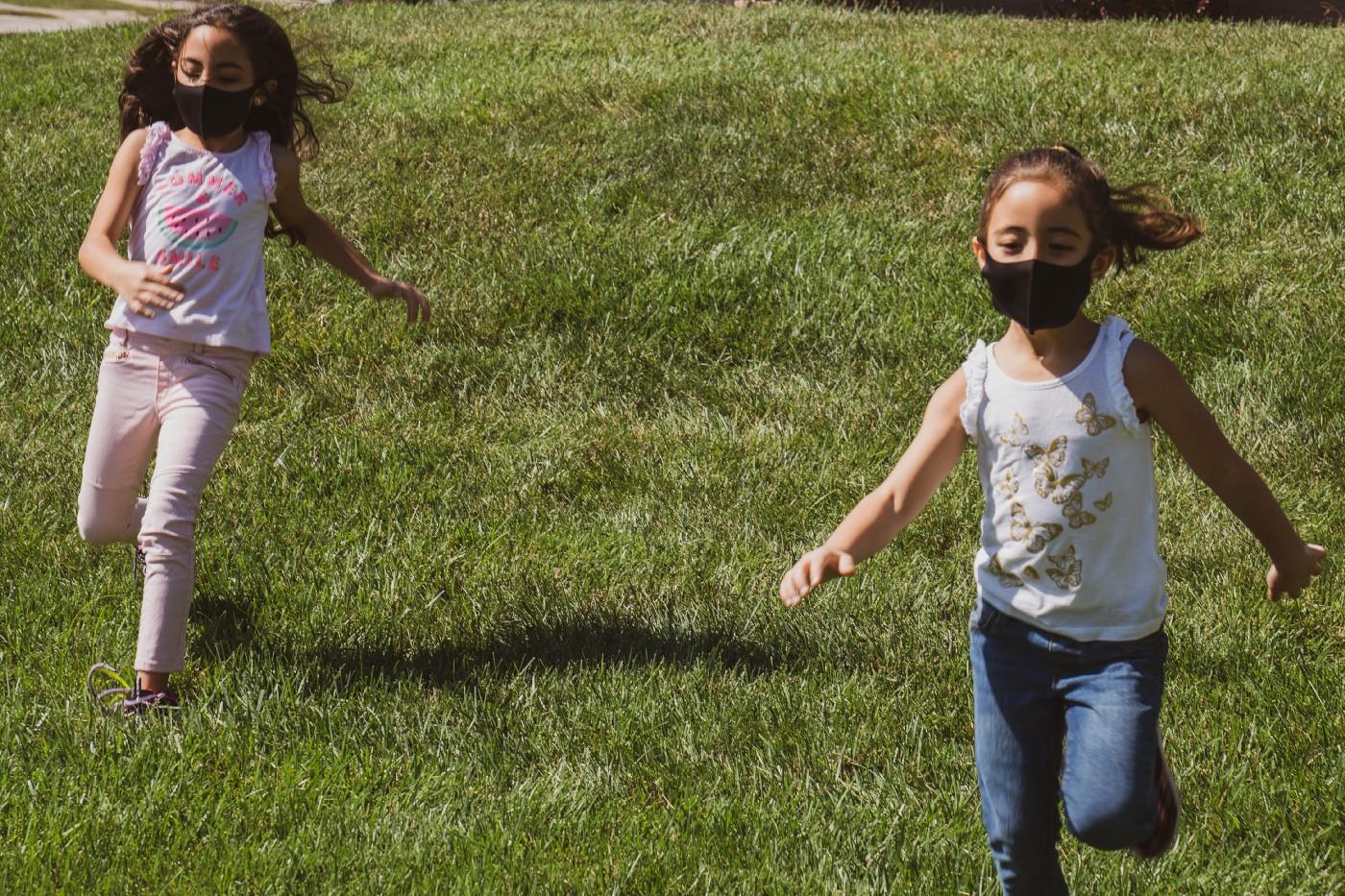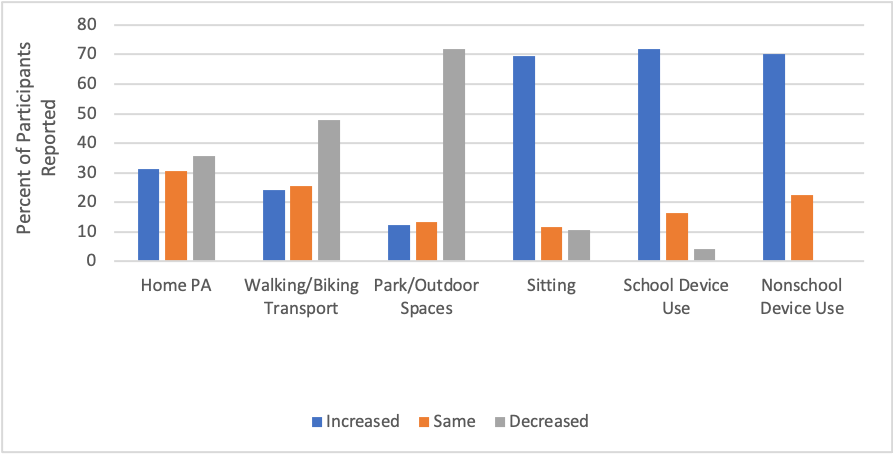
To protect ourselves and others during the COVID-19 pandemic, most of us have had to shift our everyday lives to our homes. This has led to a steep drop in the amount of physical activity our kids are getting. Prior to the pandemic, few U.S. children were meeting physical activity guidelines, which call for a minimum of 60 minutes a day of movement and exercise. With child education being moved from school grounds to the home, many have raised concerns about physical health declining.
I’m a graduate student in UT’s Department of Kinesiology and Health Education, and this past June, I worked with Professor Darla Castelli’s Kinetic Kidz Lab to understand how quarantine may affect child behavior. We created a questionnaire to assess parent perceptions of their child’s physical activity and use of devices like cell phones before and after quarantine, as well as what their experience has been with remote physical education. The questionnaire, distributed online to parents in Central Texas, asked about types of physical activity, time spent sitting, and school and non-school device use. Parents were asked to report whether they believed their child’s physical activity, time spent sitting, and device use hads increased, remained the same, or decreased during quarantine.
We looked at school-aged kids specifically, from kindergarten to fourth grade, and the results were astounding but not surprising. More than 70% of kids had reduced their visits to parks, playgrounds, and other outdoor spaces. The number of days kids walked or rode a bike dropped nearly 50%, and the days per week children participated in physical activity at home dropped 36%.
At the same time, nearly 70% of parents reported that their children were sitting more during quarantine than before and that use of devices for both school and non-school purposes increased. No parents reported decreases in non-school device use of devices.

Despite the value of physical activity, only 44% of parents reported receiving remote physical education instruction from their child’s school, which included video recordings, website links, live streams and mailed worksheets. Parents preferred to receive a variety of types of physical activity instruction, and when asked what they could do to improve the situation, they urged teachers to provide them with “something, anything.”
And although there have been guidelines for distance learning for quite some time, the pandemic provided little time for preparation and professional development so teachers could properly plan remote physical education lessons.
“Prior to the pandemic, few U.S. children were meeting physical activity guidelines, which call for a minimum of 60 minutes a day of movement and exercise. With child education being moved from school grounds to the home, many have raised concerns about physical health declining.”
As children continue to participate in remote learning or phase into in-person instruction, the importance and value of physical activity on child health needs to remain a priority. In addition to improving physical health, physical activity and play can provide necessary breaks for children that may enhance their ability to learn, whereas more time spent sitting may lead to behavioral issues and hinder them from learning effectively.
Parents can do several things to help get their kids moving. Put on some music and have a dance party, go on a scavenger hunt outside and look for different bugs and plants, or do some stretches. To make learning more fun, mimic an animal every time your child reads a certain word. For example, walk on all fours like a bear around the couch whenever you read “that” and hop like a frog five times when you read “what.” If your child appears restless, fidgety, or is struggling with learning the material, take a break to go outside or do something active so he or she can come back more ready to learn.
Family physical activity may be difficult with parents working from home, so if parents choose to give their children a device like a cell phone to occupy them, put on movement-focused videos like GoNoodle. Maintaining physical activity during quarantine can be challenging, but if schools provide a variety of types of remote physical education lessons and encourage movement at home, our children may be more likely to achieve physical activity guidelines and reap the physical and mental health benefits of movement.

